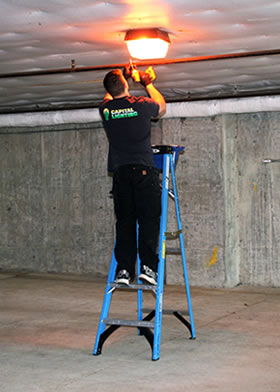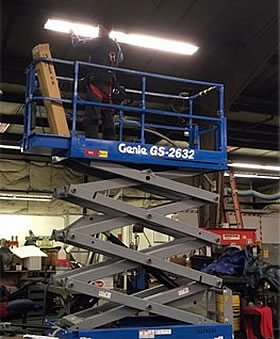 |
 |
Call Today 800-232-9023 |
 |
 |
 |
Call Today 800-232-9023 |
 |
When your lights are working at less than 100% it can slow productivity, create modest or potentially catastrophic safety hazards, and discourage customers and guests from visiting your business. We make it easy to keep your lighting, lighting controllers, and other elements in your lighting system, including your emergency lighting system, working dependably and safely.
Failures and breakdowns can happen with one or more elements in your lighting systems.
Old components, mechanical breakdowns, critters (bird, rodents, insects - you name it), harsh weather, failure of other building systems, and more can cause the components in your lighting system to fail. Our team of licensed electricians has specialized tools, training, and years of experience diagnosing and repairing commercial lighting issues.
Emergency Lighting Maintenance. Keeping your emergency lighting system in proper working order, not only makes good sense, it's the law. Because emergency lighting systems are used infrequently, they are subject to additional failure risk factors. Testing and maintaining your system regularly will help ensure it works properly the moment it's needed.
Scheduled Lighting Maintenance. Schedule regular visits for an electrician to visit and address your lighting issues to minimize the possibility of a large issue. Our lighting experts can often spot warning signs and replace the necessary components before a failure occurs. With scheduled maintenance, you minimize the number and the length of time that lighting may be out. The frequency of lighting maintenance visits is tailored to meet your needs.
As Needed Lighting Maintenance. Whether your lighting outage or issue is modest or extensive, contact us promptly to schedule an electrician to diagnose and repair it. If a bank of lights goes out, lights are flickering, or other unusual issues, especially if it involves many lights, call promptly. These could be signs of an electrical issue. If ignored, electrical issues may potentially create safety hazards.
Contact us today to prevent or minimize lighting failures and avoid or minimize the associated hazards.

